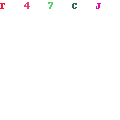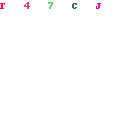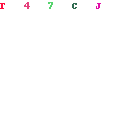Cuts of Gem Stones
The humble gem stone, in its natural form, is often rough and unattractive.
Even the prettiest of the natural uncut gem stones fall short of our expectations.
This is where gem stone cutting comes in.
The term lapidary covers all of the many techniques used to make a raw gem stone more attractive and useful. While some of the more amorphous stones like turquoise respond well to simple polishing, many of the most valuable must be cut.

The cutting of gem stones is required because many gem stones have a strong and rigid crystalline structure and are too hard and brittle to be shaped any other way.
The principle behind gem stone cuts is based on the way the molecules of stones are 'stacked'; just imagine these molecules as stacked in layers like a deck of cards.
Striking the stone along a line between crystal layers will cause a section of the stone to break away easily and cleanly.
This way, you can cut the gem stone.
Some stones, like mica and quartz, are cut easily due to the weaker bond between the crystalline layers, while others require special tools and skills to produce the gem stone cuts.
Some gem stones with simpler crystalline structures can only be cut in one or a few directions. Others, like the diamond, have a complex structure and can be cut several ways on the same stone.
Each cut is called a facet. Thus the term multi faceted originates as a gem term describing complex cuts of gem stones that can show more than one face or facet.
The reason for gem stone cuts varies from stone to stone. For the diamond, cutting the gem stone is needed to get the brilliance the diamond is famous for.
Other reasons for cutting a gem stone is to achieve a particular shape or style for a specific piece of jewelry.
There are many types of gem stone cuts in common use today.
The gem stone cuts vary from checkerboard cut, brilliant cut, emerald cut, round cut, square cut, triangle cut, rose cut, baguette cut, trilliant cut, marquise cut, heart cut, gem stone cut cabochon, octagon cut, cushion cut, oval cut, princess cut, radiant cut and briolette cut.

Some Types of Gem Stone Cuts:
Checkerboard Cut:
The checkerboard cut is a technique where the gem stone is cut into a multitude of square facets spaced regularly around the stones surface, giving a 'Checkerboard' effect of light and dark squares when moved in the light.
This type of gem stone cuts is commonly used for garnets, topaz, citrines and amethysts or semi precious stones.
Cabochon Cut:
The gem stone cut known as cabochon is one of the most ancient methods of cutting gem stones. It is rounded on the top and flat on the bottom.

Among the gem stones commonly cut in this fashion are the star sapphire, cat's eye gem stones, tiger's eye gem stones, star gem stones and the star ruby.
In recent years, more and more demand for cabochon cut emeralds has emerged in the cut gem market.
Rose Cut:
The rose cut is a variation of the cabochon where flat facets are polished into the curved surface of the cabochon cut stone.
Brilliant Cut:
In earlier years, diamonds were cut using the rose cut method, but now the brilliant cut method is commonly used. This is a method of cutting the gem stone
in the form of tow truncated cones, face to face, with the upper cone more severely truncated than the lower.
The lower truncated cone forms a facet known as the cutlet. Together, these compound shapes produce the most complete return of light of any gem cutting technique.
So, whether for style, brilliance, or shape, gem stone cutting will always be an integral part of the gem stone industry.